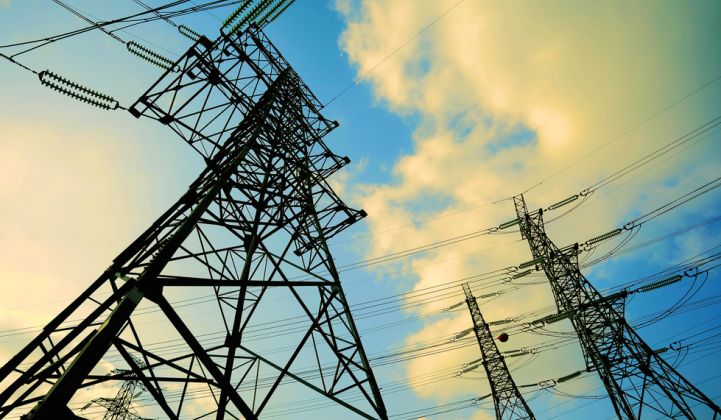In the two years since we outlined how smarter transmission policy could accelerate and reduce clean energy costs in America’s Power Plan, evidence continues to mount that robust high-voltage transmission networks are indispensable to a clean energy future.
Smart transmission planning has enabled most of the wind and solar now operating in the United States and has done so while generating large net economic benefits; one study estimated that co-optimizing generation and transmission planning could save an incredible $90 billion.
But transmission expansion isn’t happening fast enough. Scientists say avoiding catastrophic climate impacts requires slashing global carbon emissions 80 percent or more by 2050. While wind and sunlight can power our nation’s homes and businesses, they can’t be moved in pipelines or rail cars -- electric transmission lines are essential, and inadequate transmission remains the principal barrier to potentially explosive renewable energy growth.
So how do we clear this hurdle to our clean energy future?
The Lone Star State shines
Texas provides the best example of how new transmission facilitates renewable energy development. The state’s 2005 Renewable Energy Program directed the Public Utilities Commission (PUC) to identify Competitive Renewable Energy Zones (CREZ), geographic areas where wind generation facilities would be constructed. In 2008, the PUC unveiled a plan to build 3,600 circuit miles of new and upgraded high-voltage lines to deliver 18,500 megawatts of wind energy to Texas consumers.
Completed in 2013, the CREZ lines had connected 14,098 megawatts of wind generating capacity by the end of 2014 -- more than one-fifth of all U.S. wind power. Texas added 1,800 megawatts of wind in 2014 alone, more than the installed wind capacity in 39 states. By the end of 2016, Texas installed wind capacity will reach 21,200 megawatts -- surpassing the CREZ target by almost 3,000 megawatts.
But wind isn’t the only beneficiary of CREZ transmission. Utility-scale solar photovoltaic facilities -- not even part of the original plan -- are rushing to connect to the CREZ lines. The Electric Reliability Council of Texas predicts 6,000 megawatts of solar PV generation will come on-line by 2017, catapulting Texas to second in the nation in solar capacity, behind only California.
The economics of Texas’ CREZ make this remarkable story even better. CREZ cost $6.8 billion, but the transmission lines and renewable energy they enable are saving ratepayers $1.7 billion a year in electricity production costs, creating more than $5 billion in economic development benefits and cutting electric-sector carbon emissions 16 percent.
Bottom line: CREZ transmission lines are rapidly paying for themselves and will deliver huge net economic and environmental benefits for decades.
Smart transmission planning benefits across America
Texas isn’t the only place where transmission lines are unlocking renewable resources. California’s Renewable Energy Transmission Initiative identified transmission projects needed to meet the state’s aggressive 33 percent by 2020 renewable energy standard. San Diego Gas & Electric’s Sunrise Powerlink was energized in 2012, and in just two years added more than 1,000 megawatts of renewable energy to the utility’s portfolio, increasing its renewable share from 12 percent to 30 percent.
The Midwest Independent System Operator approved seventeen 345-kV transmission lines across nine states at a cost of $5.2 billion to help cost-effectively meet regional renewable energy goals. MISO estimates the so-called “MVP” projects will enable 43 million megawatt-hours of wind energy, reduce carbon emissions between 9 million and 15 million tons per year, improve system reliability, and generate up to $49.6 billion in net economic benefits over the next 20 to 40 years.
Solving the transmission-renewables mismatch
Successes like these prove renewables can grow rapidly at low cost -- if transmission is built to connect them. However, the seven- to 10-year lead times for planning and building transmission and one- to two-year lead times for building renewable generation continue to intimidate wind and solar development across the country, despite welcome policy reforms like FERC Order 1000. Developers can’t build large new wind or solar resources unless new transmission capacity needed to deliver their power to customers has been planned years in advance.
Lack of transmission infrastructure also prevents resource-rich states like New Mexico (11th in wind potential, 2nd in solar potential) from exporting huge amounts of high-quality, low-cost wind and solar. Senator Martin Heinrich (D-NM) recently introduced legislation to restore federal backstop authority to site transmission lines, noting similar federal authority has expedited siting of thousands of miles of natural gas pipelines in recent years. From the Dakotas to Arizona, wind and solar resources capable of powering everything in the country dozens of times over remain untapped due to insufficient transmission.
A 2014 update to NREL’s 2012 Renewable Electricity Futures Study found if today’s cost trends continue, an 80 percent renewable energy future is technically feasible and may cost no more than business as usual, not to mention the multi-trillion-dollar public health and environmental benefits. And the cheapest generation, by far, is utility-scale.
The transmission imperative is clear. Now let’s help every region of the country embrace what forward-looking regions have shown: if they take proactive steps to permit and finance transmission infrastructure, the low-cost renewable resources will come.
***
Bill White is president at Norton White Energy and Senior Advisor to Americans for a Clean Energy Grid (ACEG) and John Jimison is managing director of the Energy Future Coalition, which hosts the campaign for ACEG. Both are contributing authors to America’s Power Plan.



